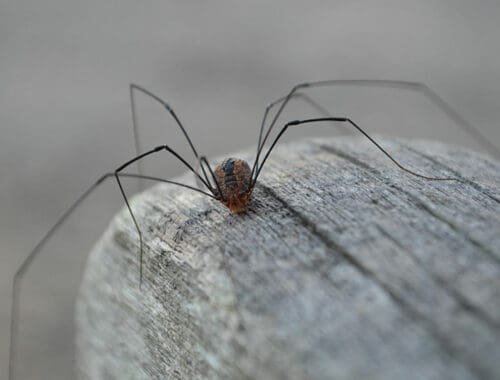The word “hypoallergenic” is thrown around a lot with all these new pet breeds. But is that true? Are cats genuinely hypoallergenic, or has it become a new age term that simply means “less allergy-triggering.” We’re going to find out.
But first of all, let us burst your little sneezy bubble—ragdoll cats are in no way hypoallergenic. They are just as likely to spike the sniffles than any other furry cat breed. Let’s dig a little more into the science behind it.
Plus, can you keep cats with allergies? In many cases, that’s a big resounding yes! But every person is different, and you should absolutely consult your physician for verification.
Ragdoll Cats Are Not Hypoallergenic
It’s no wonder you want a Ragdoll cat. We can’t blame you! These medium-coated beauties tout creamy, buff seal point colors and penetrating blue eyes.
These guys really take cuddling to another level. They also woo people with their sweet demeanor and desire for affection. If you’re a cat lover, nothing about them might sway you away—except allergies, of course.
Ragdoll cats aren’t hypoallergenic—they are just as triggering as any feline. In fact, they aren’t even marketed as an allergen-free breed like some others. But what makes cats such triggers when it comes to allergies?

Cat Allergies: The Skinny
If you suffer from any pet allergies, you probably already know the gist of it—fur equals dander, which equals irritation. But what really is the scientific cause? How does it work?
Dander is one of the leading causes of allergies. But what exactly is it? According to WebMD, 10% of the US population alone is allergic to animals—and most of them are cats—trumping dogs by over half the votes.
That is because fur really isn’t the problem here—it’s a protein their bodies make that sets them apart from other animals. People with overly sensitive immune systems can react, producing annoying symptoms, such as:
- Swollen, itchy eyes
- Rashes or hives
- Runny/stuffy nose
- Coughing, wheezing
- Contact redness or rashes
Feline salvia contains a protein called Fel d 1. When cats groom themselves, they saturate their coats in saliva containing the substance. So, you might notice when a cat licks you or rubs against you, your skin can turn red and develop irritation.
If you have already been diagnosed with allergies or live with someone who suffers, there are measures you can take to coexist. However, it might not be worth sharing your home space with nastier allergy cases. Only you can make that call.
Hypoallergenic Cat Breeds
No animal is ever 100% hypoallergenic. Believe us–we have the Smithsonian Magazine to back us up. Cats aren’t a box of baby wipes, after all. They are living creatures.
As we mentioned above, all cats carry the Fel d 1 protein in saliva, on the skin, and in urine. Cats have their own particular allergen that can really affect people—even those who aren’t allergenic to any other animal.
Felines can cause super severe allergies to very mild—it depends on your body’s reaction to this protein. However, some cats are less likely to cause severe allergies than other breeds.
These breeds include:
- Sphynx
- Balinese
- Siberian
- Oriental Shorthair
- Devon Rex
- Cornish Rex
- Javanese
- Burmese
- Ocicat
- Russian Blue
Does hairlessness equate to earning the title of hypoallergenic? No, not necessarily, since the allergen comes from saliva, skin, and urine. Some cats with naturally long coats, like the Siberian, can trigger milder allergies than a Sphynx, for instance.
So, we want to be clear that if you buy a cat and have allergies, no one breed will magically end the issue. But with the proper steps, you might be able to enjoy each other’s company through healthy distance.

Living with the Cats You’re Allergic to
Luckily, allergy sufferers and their felines can live together harmoniously thanks to just a few lifestyle adjustments and everyday products on the market. Here are a few tips to lessen the effects on your body should you choose to get a ragdoll cat.
Use Targeted Products
You can find supplements and even wipes that you can buy for your cat that reduces dander on their coats. Some of these products are more effective than others, so we recommend reading reviews to ensure you’re getting a quality product worth your money.
Routine Bathing
Ensure to bathe your cat every four to six weeks and remove dead skin and debris from the fur. Also, daily routine brushing will keep the fur-free of debris.
Clean Frequently
Everything around your home will need to be cleaned regularly. Hard floors, carpet, upholstery, and other fabrics, especially where your cat often lays, need to be vacuumed and deep cleaned. Try to keep up with general vacuuming daily and deep cleaning roughly once every two weeks.
Restrict Access
While you might allow your Ragdoll access to the entire home, you might try to curb your allergies by restricting access to certain rooms. As much as you might want your Kitty to sleep with you at night, shutting off your bedroom might be the most important one. That way, they aren’t getting allergy-causing dander on your bed where you sleep for 8 hours a night.
Permit Outdoor/Indoor Living
Most cats will jump at the opportunity to be in their natural element. So, as long as you have a way to safely and securely protect your cat from harm, this can be an excellent option for allergy sufferers. If you live in an area where this option is feasible, you can allow your cat access to the outdoors.
Can You Get Rid of Your Allergy Problem?
We all know that you can combat an allergy issue, but can you stop it completely? It is possible for some people to essentially outgrow a cat allergy, especially if they have been around them enough. However, it can actually cause some people’s allergies to worsen and even develop into other more severe troubles, such as asthma.
Interestingly, the opposite can be true as well. People who have not previously had allergies to cats can suddenly develop them. It is a myth that people’s allergies change every five to seven years. But they do indeed change due to exposure to environments and your body’s reaction over that time.
So be careful the route you take and check with your doctor for the best plan of action.
Conclusion
Even though Ragdolls have gorgeous medium-length coats, sapphire blue eyes, and wonderful temperaments, they aren’t an allergy-friendly breed. If you have mild allergies, you can live with a cat without too much trouble by taking the proper measures.
But some people who have allergies much more severely might not be able to own cats at any point in their lifetime. You should always check with your family doctor for guidance if you’re unsure.
Featured Image Credit: Carolyn R, Shutterstock














